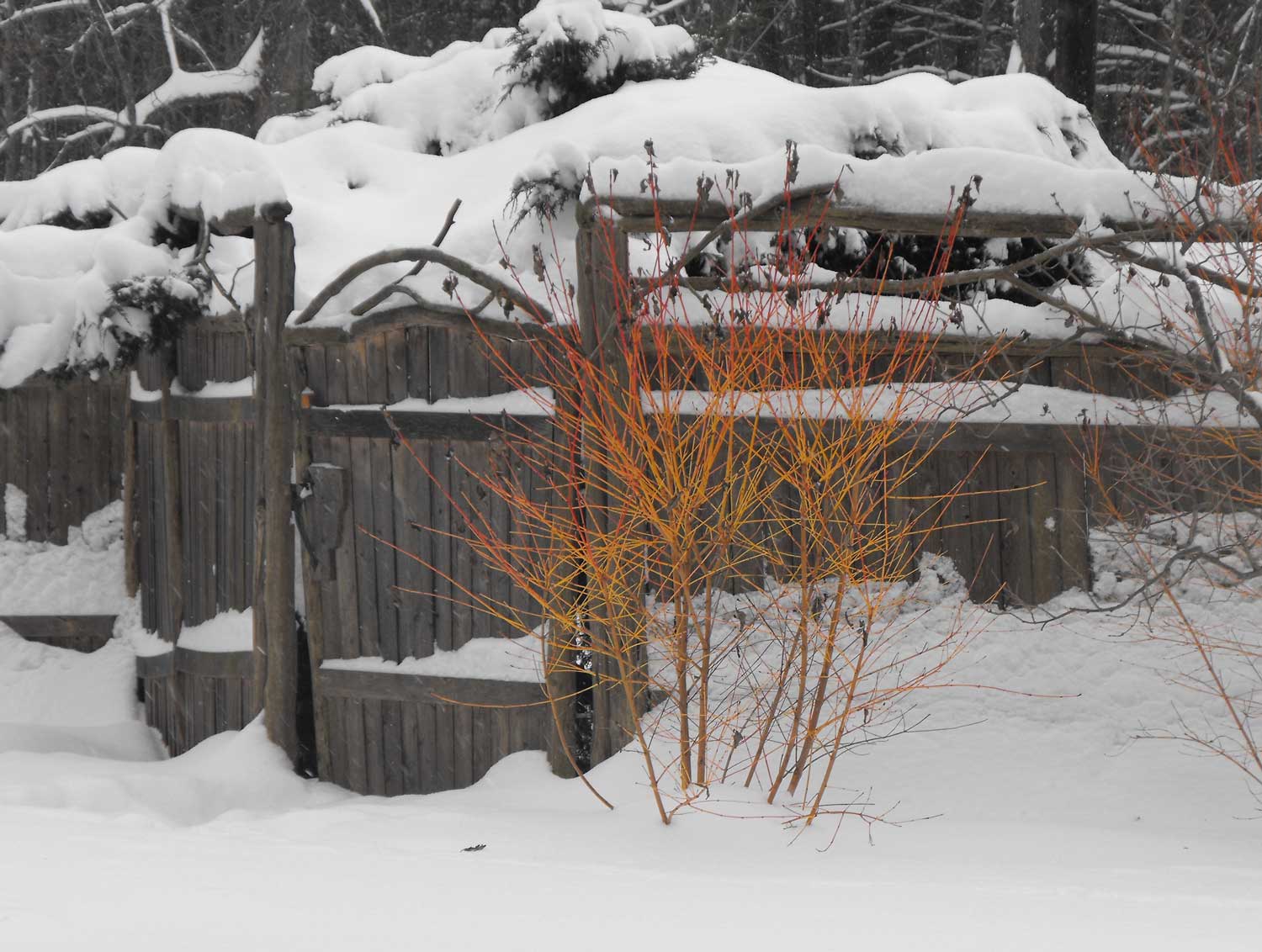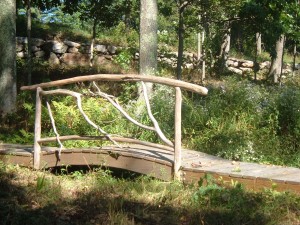BARE BONES



Although our outrageous and well-touted colors are fading fast. other joys in the landscape persist. I could become quite lyrical about colors at this time of year — about how enticing the subtle grays and beiges appear while the warmer ochres and dark oranges begin to vanish from sight. However this is more a landscape's bare bones.
Fall provides a perfect opportunity to take a good hard look at our gardens. It’s the time when a garden’s architecture is revealed. (Winter offers the same but it can be challenging when a thick cover of snow is upon us). Like removing one’s clothes at a doctor’s office, the garden can be more easily assessed when the clutter of clothes — no, make that daylilies, asters, coleus — you name it, has disappeared.
And so, with warmer clothes upon us as we put our gardens to bed, we can now discover opportunities for change in the garden. Plants will be better “rooted” when accented by structure and mass inherent to stone, wood or metal.
A garden’s bare bones is about the permanent, more enduring hardscape. This includes the buildings, driveway, stone walls, paths, boulders, bird baths, benches and sculptures among other things.
That said, the less permanent can also now be appreciated in ways that a busier garden doesn’t offer. These “softer” hardscapes such as woody plants i.e. trees and shrubs call out for attention. In assessing them, think pruning. If lacking, think planting. Until the ground is frozen there’s still time.
Here are three fairly simple things to consider while exploring what comprise our “bare bones”:
Optimal viewing sites: These are crucial. For example, do you experience your garden while walking on the path to the house? Is it visible from the kitchen or office window (something we need to consider more as the temperatures drop). Don’t shortchange the multiple angles available to you for appreciating nature. That includes birds that visit the garden as well.
Architecture: This need not be about the buildings but can include details such as gates, fences, arbors, stone walls, boulders and of course, on a larger scale, essential walkways. No matter what the size, structure defines. Focal points, say a birdbath or a marble headstone laid down flat to make it less conspicuous (I found one by my chicken coop with the date, 1831 and the words: ‘Cling Not to Earth’ makes for a more “lively” garden.And, what a lovely feature emerged when I came upon an old iron gate in a dilapidated antique store Hudson, NY, painted it black and installed it at the base of a walkway. We never close it but it sure makes for an inviting visual and tactile statement. You feel you’re entering a more private and privileged place.
Borrowed views: How I relish once again the opportunity to gaze at my stone walls or catch a hint of the hills beyond. A definite perk at this time of year. How can this be maximized? Editing — as long as it’s on your own land… Pruning a few branches or removing that gangly, diseased looking tree will open things up to offer the landscape beyond. Of course as you move through the land another layer is revealed and calls out for attention. It’s like touching up a wall to discover you really have to paint the whole thing.
COMMENTS
2 COMMENTS
alice schrade wrote:
October 19, 2011 at 11:09 am
very nice photos, Honey!! Well designed perspectives. You remind me I have to call the spectrum re Granito.
honeysharp wrote:
October 19, 2011 at 11:18 am
Thanks Alice! I just sent it to everyone else on the trip. Not usually so proactive but I thought I’d also have people’s email address that way and vice versa.
Good luck with the Granito.
XX
Honey
PS Let me know if you can come to San Miguel

